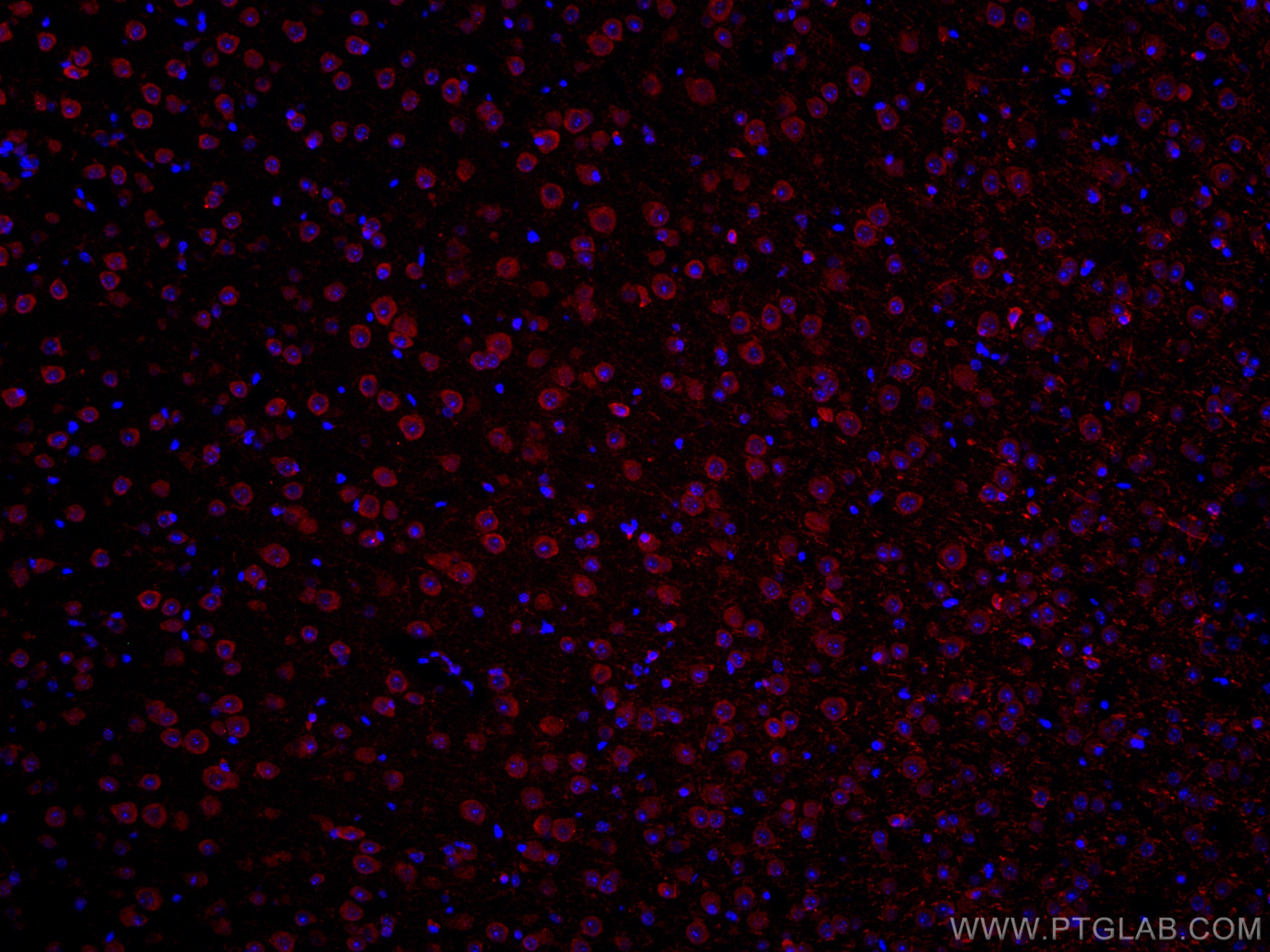TRIM2 Monoklonaler Antikörper
TRIM2 Monoklonal Antikörper für IF
Wirt / Isotyp
Maus / IgG1
Getestete Reaktivität
Hausschwein, human, Maus, Ratte
Anwendung
IF
Konjugation
CoraLite®594 Fluorescent Dye
CloneNo.
1H9C2
Kat-Nr. : CL594-67342
Synonyme
Galerie der Validierungsdaten
Geprüfte Anwendungen
| Erfolgreiche Detektion in IF | Maushirngewebe |
Empfohlene Verdünnung
| Anwendung | Verdünnung |
|---|---|
| Immunfluoreszenz (IF) | IF : 1:50-1:500 |
| Sample-dependent, check data in validation data gallery | |
Produktinformation
CL594-67342 bindet in IF TRIM2 und zeigt Reaktivität mit Hausschwein, human, Maus, Ratten
| Getestete Reaktivität | Hausschwein, human, Maus, Ratte |
| Wirt / Isotyp | Maus / IgG1 |
| Klonalität | Monoklonal |
| Typ | Antikörper |
| Immunogen | TRIM2 fusion protein Ag14637 |
| Vollständiger Name | tripartite motif-containing 2 |
| Berechnetes Molekulargewicht | 744 aa, 82 kDa |
| Beobachtetes Molekulargewicht | 70-85 kDa |
| GenBank-Zugangsnummer | BC011052 |
| Gene symbol | TRIM2 |
| Gene ID (NCBI) | 23321 |
| Konjugation | CoraLite®594 Fluorescent Dye |
| Excitation/Emission maxima wavelengths | 588 nm / 604 nm |
| Form | Liquid |
| Reinigungsmethode | Protein-G-Reinigung |
| Lagerungspuffer | BS mit 50% Glyzerin, 0,05% Proclin300, 0,5% BSA, pH 7,3. |
| Lagerungsbedingungen | Bei -20°C lagern. Vor Licht schützen. Aliquotieren ist bei -20oC Lagerung nicht notwendig. 20ul Größen enthalten 0,1% BSA. |
Hintergrundinformationen
Tripartite motif-containing 2(TRIM2) is an E3 ubiquitin ligase which directs proteasome-mediated degradation of target proteins by the ubiquitination of NEFL and phosphorylation of BCL2L11. This protein contains an N-terminal RING domain, followed by a B-box-2 domain, a coiled-coil region, and 6 C-terminal NHL repeats. TRIM2 involves in the apoptotic response to ischemia via directing degradation of BIM protein, thus has a role in neuroprotection.
Protokolle
| Produktspezifische Protokolle | |
|---|---|
| IF protocol for CL594 TRIM2 antibody CL594-67342 | Protokoll herunterladen |
| Standard-Protokolle | |
|---|---|
| Klicken Sie hier, um unsere Standardprotokolle anzuzeigen |



